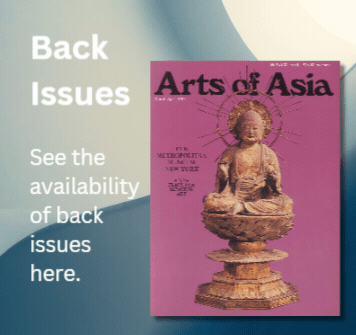YANNICK LINTZ
President of the Guimet National Museum of Asian Arts, Paris

THE GUIMET MUSEUM in Paris is a globally celebrated institution with a truly fascinating history and exceptional collections. Few museums in France bear the name of their founder, but ours is so closely related to the singular and remarkable personality of Émile Guimet that his name has come to represent more than a trace of the past: it is a core element of the museum’s identity.
Émile Étienne Guimet (1836–1918) hailed from a very wealthy family involved in the chemical industry. Probably influenced by his mother, who was a painter, Guimet put his extensive wealth to good use by gathering an extraordinary collection that provided a solid foundation for the museum.

In 1865, Guimet travelled to Egypt, a seminal journey that eventually led to his fascination with other civilisations. His visit to the Museum of Egyptian Antiquities (now the Egyptian Museum) at Boulaq in Cairo, organised by Auguste Mariette (1821–1881), the French archaeologist and Egyptologist, greatly inspired Guimet, who was enchanted by the display of the collections. In 1876, he subsequently set out on the journey that was to define the rest of his life. Together with Félix Régamey (1844–1907), his friend and a painter, Guimet first went to Philadelphia in the United States to attend the Centennial International Exhibition. Thanks to the newly opened Union Pacific Railroad, they then travelled to San Francisco where they boarded the SS. Alaska for Japan. On arrival, Guimet gathered countless Asian artefacts, especially Buddhist statuary, paintings and books. Although the rest of the trip to China, Southeast Asia, Sri Lanka and India was less fruitful, Guimet returned to France with more than 300 religious paintings and 600 statues of divinities, numerous ceramics and some 1000 Chinese and Japanese books. In his eyes, the masterpiece of this collection was the Japanese Buddhist pantheon he acquired on site after he viewed the To-ji temple mandala and understood its meaning in Mahayanic Buddhist tradition.
He collected with remarkable scientific acumen, with a keen focus on the study of religions. He was also very eager to share his extensive collections and knowledge: he therefore resolved to set up a research and training centre on Oriental religions, to which he decided to add a museum, a library and a language centre. For him, a museum was not to be simply a building where items would be on display, waiting for someone to look at them. He wanted “a museum that thinks, speaks and lives”.

Thus, in September 1879, Guimet inaugurated a museum of religions in Lyons, his hometown, but the institution did not receive the attention he had anticipated. He then decided to transfer the collection to Paris, erecting a new building in 1889 in place d’Iéna, located in the busy 16th arrondissement, where the museum remains a Parisian landmark. The museum was originally divided into three sections: the religions of India, China and Japan; the religions of Egypt, as well as those of Greek, Roman and Gallo Roman traditions; and Chinese and Japanese ceramics. Under Guimet’s directorship, the collections kept expanding and over the following decades, rooms were opened devoted to Korea, Cambodia, Vietnam and Indonesia.
Guimet’s vision stretched far beyond a classical museum: his project included a research centre, a place of study where conferences could be held and where beauty and science would be accessible to all. He consistently supported researchers and explorers, and funded different scientific publications to disseminate knowledge on the museum’s collections to scholars, as well as the general public. He died in 1918, leaving a legacy of precious collections that continued to grow, thanks to additions from explorers and scientists, amongst others.

Throughout the 1920s and 1930s, thanks to Joseph Hackin (1886–1941), Guimet’s former secretary who became his successor as director, the institution was transformed into a museum of Asian art. As global interest in Asia was growing, with a particular fascination for ancient archaeology, Hackin managed the relocation to the Guimet Museum of the Khmer collections of Louis Delaporte (1842–1945), the explorer and artist, and the Chinese and Central Asian artefacts of Paul Pelliot (1878–1925), the renowned Sinologist. Also added were the collections from India and Afghanistan of Alfred Foucher (1865–1952), the Buddhist scholar, as well as the discoveries of Hackin and his wife, Ria. The museum was also entrusted with abundant gifts from the French Archaeological Delegation in Afghanistan.
Just before the start of the Second World War, Hackin, together with Philippe Stern (1895–1979), organised a complete renovation and extension of the museum to house these new collections, while also designing the now iconic presentation of the prestigious Khmer collections. Along with Émile Guimet’s historical library, the impressive Khmer courtyard remains to this day a distinctive element of the identity of the museum. Paying tribute to the special place that Khmer art plays in its history and collections, the Guimet Museum has recently initiated a major cooperative project with the National Museum of Cambodia (NMC). Supported by the Aliph Foundation for Heritage Protection, the NMC will this year send the West Mebon Reclining Vishnu (11th century), the largest bronze sculpture found at Angkor, to France for restoration. It will then be the centrepiece of an exceptional exhibition at the Guimet Museum in 2025, and will later tour the United States.

As part of a vast reorganisation of French national collections — the Guimet had become a national museum in 1929 — the Guimet Museum was in 1945 allocated the Louvre Museum’s Far East collections (including the remarkable Grandidier collection of ceramics and Isaac de Camondo’s collection of Japanese prints) while its Egyptian, Greek and Roman collections were relocated to the Louvre. The museum was subsequently renamed “Guimet National Museum of Asian Arts (Musée national des arts asiatiques – Guimet)”, the name it still retains.
The enrichment of the museum’s Asian collections was not limited to the Louvre’s Far East collections. After 1945, the museum developed a policy of extensive acquisitions and was also generously enriched by many donors, especially Lionel and Danielle Fournier for Tibetan art and Jacques Polain for Chinese Art. Jean François Jarrige (1940–2014), director of the museum between 1986 and 2008, keenly encouraged donations and acquisitions. Thanks to his energy and vision, a major refurbishment was undertaken in 1996 under the supervision of the architects, Henri and Bruno Gaudin, and the museum reopened in 2001 to worldwide acclaim. The renovation preserved the intrinsic quality of the artefacts and the logic of their presentation while modernising the display and the discourse. The original structure of the museum remains a beacon of French 19th century architecture, and also harmoniously blends with more contemporary elements.

Yet, the Guimet Museum actually extends beyond the original building, having been endowed with two historical mansions — the Hôtel d’Heidelbach and the Musée d’Ennery — both situated in the vicinity of the main building. The Heidelbach, the home of a banking family, was constructed by René Sergent at the beginning of the 20th century as a pastiche of 18th century architecture while the Ennery was built in 1875 in a somewhat baroque Napoleon III style for Clémence d’Ennery. Today, the Heidelbach hosts a Japanese tea pavilion and displays exceptional Chinese imperial furniture while the Ennery hosts an exceptional array of Chinese and Japanese statuary and netsukes.
The Guimet Museum presently holds more than 60,000 artefacts and 500,000 photographs in its collections. Its eleven departments cover Asia from Afghanistan to India and from Southeast Asia to China, Japan and Korea. Its collections are renowned globally: for example, the Gandharan and Tibetan collections, the textiles donated by Krishna Riboud, the Khmer statuary, the Treasure of Begram, the Japanese Buddhist collection and the Grandidier ensemble of Chinese and Japanese ceramics.


Of course, the museum in no way pretends to offer an all encompassing vision of Asia. What the museum does display in an outstanding way, however, is a vision of Asia through the eyes of French and European researchers and collectors. Since its origin, the museum has conveyed a vision of Asia imbued with the beliefs and knowledge of collectors, philanthropists and scientists of the 19th and 20th centuries. What is now analysed, and often criticised as Orientalism, is also the trademark of a period when interest in other civilisations led to major developments. Thus, the Guimet Museum says as much about Western visions of the world as it does about the Asian cultures it set out to depict.
The history of our Chinese Buddhist art collections, for example, is of course tied to a specific period in time when the West was at the peak of its power. Yet, this should not obfuscate the fact that it is also the result of the involvement of such passionate individuals, explorers, researchers and collectors as Jean Pierre Abel Remusat, Stanislas Julien, Edouard Chavannes, Paul Pelliot and Victor Segalen, who were instrumental in developing knowledge of, and appreciation for, Asian arts.


Paul Pelliot deserves a special mention for his remarkable work at the Mogao caves in Dunhuang in north-west China, having acquired paintings and archaeological pieces as well as manuscripts that might not otherwise have survived. Thanks to him, the Guimet Museum is an important institution for the study of the arts of Central Asia, making them accessible to a wide audience of researchers, as well as the general public.
Of course, since the beginning of the 20th century, Asian countries have undergone major changes, whether cultural, demographic, economic or political. Thus, the very nature and perception of Asia is now different, raising new questions for the museum. With the insatiable cultural interest displayed by today’s youth for Korean and Japanese cultural productions, the growing place of Asian countries in the contemporary art world and market, the rise in tourism and the internationalisation of higher education, Asian cultures are becoming increasingly familiar in the West. Yet, almost paradoxically, such proximity calls for a fuller appreciation of the depth and richness of these cultures.


In this context, the Guimet Museum fully intends to play a leading role as an institution that does not seek to objectify or oversimplify Asian cultures. On the contrary, we fully engage with them, through contextualisation, through an approach that refuses to be overpowering and domineering and, true to Émile Guimet’s original design, aims to understand the artefacts, the cultures where they originated and our relation to them. We thus strive to show cultures in all their depth and complexities, to be an institution which engages in cultural dialogue with its counterparts around the world.
As we see that Asian cultural references and productions increasingly pervade our own cultural representations, one needs to provide tools to understand these cultures. For example, can a manga really be understood without any grasp of the origins of its iconography or narrative, the cultural traditions from which it emerges, the cultural setting of its very references? Such times of global influences, where Asia is on the rise, call for a radical rethinking of the role a museum can play in the contemporary world, its capacity to engage in dialogue and present alternative world views to those based on conflict and rejection.



Museums today need to reflect on the possibilities for new, more inclusive narratives, adapted to a variety of audiences. True to Émile Guimet’s original plan, the Guimet Museum strives to offer tools to understand the narratives behind the exhibits, the context in which they were created, the settings and the influences that they showcase. Showing that cultures are not born in a void, but flourish in interactions and influences is a major way in which museums can help reach a more balanced vision of human interaction. The role of temporary exhibitions is paramount in this context, as well as the cultural programmes on offer.
Since my appointment as President of the Guimet Museum in November 2022, I have continuously strived to develop new cooperative projects with museums around the world. Creating a museum that is truly an institution of the 21st century is not only an intellectual undertaking, but an initiative that sets the museum at the centre of social and cultural dynamics and interactions. Questioning ourselves about our history, our identity and mission, as well as our impact, and being constructively critical about how we approach our future, is a priority that we think best tackled with our partners: other museum staff, academics, researchers, collectors, galleries, art dealers, public and private cultural, educational and social institutions, as well as the general public.


True to the original spirit of Émile Guimet, we remain “a museum that thinks”. We are committed to being part of major reflections on the future of museums and were guests of honour of the Bihar Biennale on the future of museums in 2023. We attended the World Culture forum in Hong Kong in March 2024 and have offered to host the Bei Shan Tang Foundation’s “Curators’ Forum” in Paris in 2025. Because we feel our programming should be aligned with major moments in history, the Guimet Museum also dedicates its 2024 exhibitions to China (as explained in another article in this special issue).
The Guimet Museum proudly remains a place where visitors can discover Asia and how Asia is viewed in the West. It is a place for understanding, which brings out the past in all its complexity and sheds light on paths for a future based on dialogue, as one tries to understand the universal dimension of cultures in their different forms. It is, indeed, a much needed place.


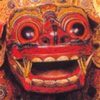 Subscribe
Subscribe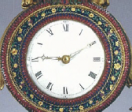 Calendar
Calendar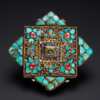 Links
Links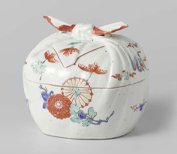 Gift
Gift

